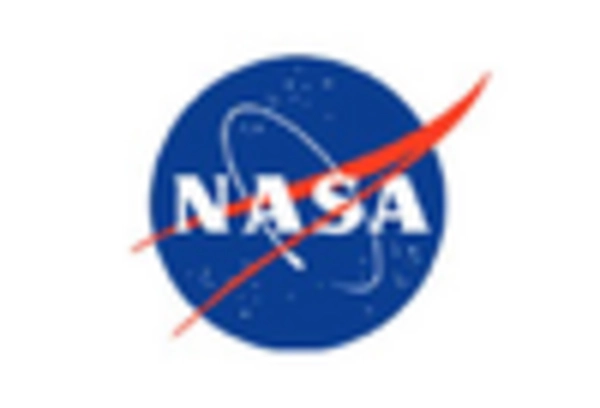Advancements in Hydroponics
The space agriculture market is experiencing a surge in hydroponic technology, which allows for soil-less cultivation of crops. This method is particularly advantageous in space environments where traditional farming is impractical. Hydroponics can reduce water usage by up to 90% compared to conventional agriculture, making it a sustainable option for growing food in space. As NASA and private companies invest in research, the market is projected to grow significantly, with estimates suggesting a valuation of over $1 billion by 2030. The advancements in hydroponic systems are likely to enhance crop yields and nutritional value, thereby supporting long-duration space missions.
Increased Investment in Space Missions
The space agriculture market is benefiting from increased investment in space exploration missions. Government agencies like NASA and private entities are allocating substantial budgets for missions aimed at establishing sustainable food sources in space. For instance, NASA's Artemis program, which aims to return humans to the Moon, includes plans for agricultural experiments. The funding for these initiatives is expected to exceed $30 billion over the next decade, driving innovation in agricultural technologies. This influx of capital is likely to accelerate the development of systems that can support human life on other celestial bodies, thereby expanding the market.
Focus on Nutritional Quality of Space Crops
The space agriculture market is placing a strong emphasis on the nutritional quality of crops grown in space. As missions extend in duration, ensuring that astronauts receive adequate nutrition becomes critical. Research is being conducted to enhance the nutritional profiles of crops, focusing on vitamins and minerals essential for human health. This focus is likely to influence the types of crops selected for cultivation in space, with an emphasis on those that can provide maximum nutritional benefits. The market for biofortified crops is expected to grow, potentially reaching $200 million by 2028, as the importance of nutrition in space missions is increasingly recognized.
Growing Demand for Space-Based Food Production
The space agriculture market is witnessing a growing demand for food production systems that can operate in extraterrestrial environments. As space missions become more ambitious, the need for reliable food sources is paramount. Research indicates that astronauts require a balanced diet to maintain health during long missions, which could last several years. This demand is prompting the development of advanced agricultural technologies, including vertical farming and bioreactors, which are designed to function in microgravity. The market for these technologies is projected to reach $500 million by 2027, reflecting the increasing importance of food security in space.
Collaboration with Agricultural Technology Firms
The space agriculture market is increasingly characterized by collaborations between space agencies and agricultural technology firms. These partnerships aim to leverage expertise in crop science and engineering to develop innovative solutions for food production in space. For example, NASA has partnered with companies specializing in vertical farming to explore efficient growing methods. Such collaborations are expected to enhance the capabilities of space agriculture systems, potentially leading to breakthroughs in crop resilience and yield. The synergy between these sectors is likely to drive market growth, with projections indicating a compound annual growth rate (CAGR) of 15% over the next five years.

















Leave a Comment